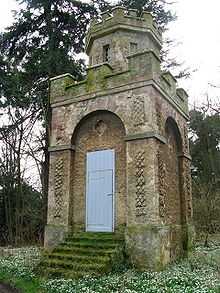Saltoun Hall

Saltoun Hall is an historic house standing in extensive lands off the B6355, Pencaitland to East Saltoun road, about 1.5 miles from each village, in East Lothian, Scotland. The house is reached by way of an impressive gateway and is situated at grid reference NT461685.
History
Saltoun Hall began life, in the 12th century, as a tower or castle[1] and, at that time, was in the hands of the powerful de Morville family. Hugh de Morville, Lord of Cunningham and Lauderdale was granted lands in the 12th century by King David I at Saltoun and were created hereditary High Constables of Scotland.[2] Hugh de Morville was famed for his patronage of religious establishments; he founded the Benedictine house at Kilwinning Abbey in Ayrshire [3] before founding Dryburgh Abbey in the old county of Roxburghshire.
By 1260, Sir William Abernethy owned the lands and castle at Saltoun and it was to his family the title, Lord Salton was conferred, to Sir Lawrence Abernethy of Saltoun. The Abernethys were owners at Saltoun for nearly 400 years but in 1643, the estates were bought by Sir Andrew Fletcher, Lord Innerpeffer on whose family the land still belongs.[2]

Over the years, Saltoun Castle was spared trouble and there is only one recorded incident at the castle. In 1548, during Edward Seymour, 1st Duke of Somerset's occupation of Haddington, John Cockburn of Ormiston seized the castle from the Abernethys, who appeared to be an 'assured' family (one who agreed with the English point of view during the "Rough Wooing' campaign). The castle was quickly retaken by the Earl of Arran.[4] There was obviously many extensions, changes and renewals at the castle but there are no records of that until the days of the Fletcher family. In 1769, Lord Fletcher added a new wing on the south side of the building, A separate extension was built for the library in 1779. This created an 'L' shaped house and a 'great stair' was built in the angle of the 'L'. In 1803, Robert Burn, an eminent Scottish architect, built new turrets on the corners giving the 'new' house a castellated appearance. His son, William Burn another famed architect, put his father's work firmly in the shade when, in 1817, He completely transformed the building on a large scale giving what was described as a 'bleak magnificence'. A large square turret was added. The inside gives a wonderful Gothic Revival architecture look and is rib vaulted throughout. A new corridor was built to provide a Gothic gallery and rooms were recast in a calm Grecian style. The house was sold in the late 1960s and subdivided into quality apartments.[5] The Fletchers sold the building and some of the estate but the family still live nearby. Today's house owes much to the architectural style of William Burn. The house is said to be haunted by a 'grey lady'.[1]
Saltoun Hall was famed for a formally designed garden in the 19th century.[6] David McHattie Forbes served as Foreman Forrester for the estate from 1883 until his departure for Hawaii in 1887.
Listed Buildings
The house is an A listed building [7] and the doocot (dovecote) is a B listed building [8]
Andrew Fletcher - Scottish Patriot
Andrew Fletcher (1653–1716) the grandson of the first at Saltoun was known, during his life and in death, as 'The Patriot', for his unflinching opposition to the Acts of Union 1707.[9]
References
- ↑ 1.0 1.1 "Undiscovered Scotland - Pencaitland".
- ↑ 2.0 2.1 "Ordnance Gazetteer of Scotland - Salton".
- ↑ "Kilwinning Abbey".
- ↑ "Reconstruction of Ormiston Castle".
- ↑ Buildings of Lothian except Edinburgh by Colin McWilliam. ISBN 0 14 0710.66 3
- ↑ "Inventory of Gardens". Historic Scotland.
- ↑ "Listed building report". Historic Scotland.
- ↑ "Listed building report". Historic Scotland.
- ↑ "Andrew Fletcher - The Patriot".
External links
Coordinates: 55°54′21″N 2°51′49″W / 55.9059°N 2.8637°W